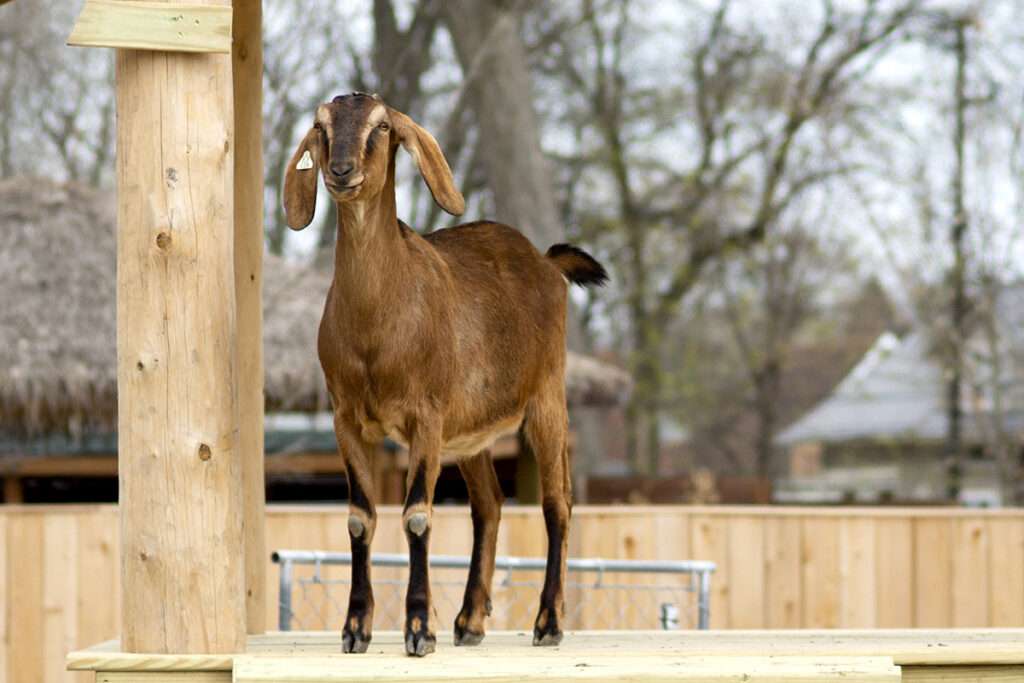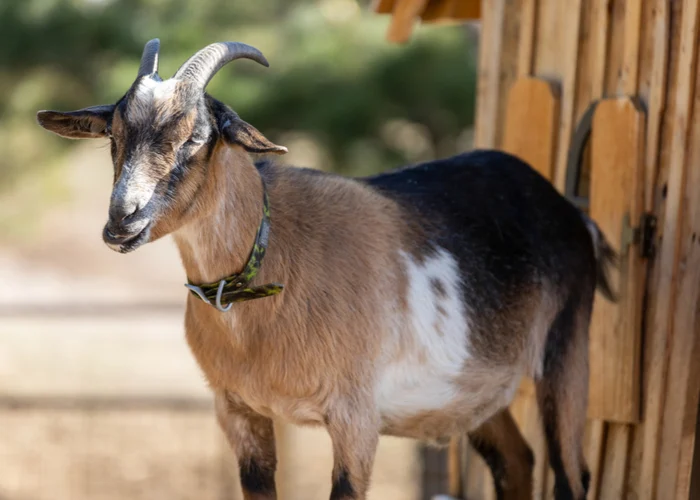
Description:
All goats have horns, beards, and split (cloven) hooves. Goats are considered ruminants and ungulates (animals with hooves). For their size, lop-ear goats are distinctive. Compared to typical dairy goats, they are taller and stockier. Their long, curved noses, short, glossy coats, and round faces make them distinctive features as well.
In addition to black and dark gray, they also come in golden brown, reddish-brown, and other hues. The most typical hue is a mixture of brown and white. The Nubian goat typically has white or black markings on its face. They may have brown, white, or black long, silky ears.
Behavior:
Nubian goats are renowned for being particularly intelligent and curious. These adorable lop-eared beauties have incredibly amiable and submissive dispositions. Nubian goats are popular farm pets in addition to milk producers because of their friendly disposition.
The majority of Nubians are not only amiable and simple to handle, but they are also exceedingly gregarious beings that appear to thrive on interaction with both other Nubians and the people who maintain them.
Benefits/Uses:
Nubian goats serve two purposes. Moreover, they are reared to provide both milk and meat. They are perfect for producing meat because of their size. Moreover, they are the perfect breed of dairy goat due to the greater butterfat content in their milk.
The intelligent and beautiful Nubian goats are wonderful creatures. Similar to infants, they become quite quiet and tranquil while receiving food or water. They can be boisterous at times, and they do so to communicate their needs and feelings. Nubian goats are excellent pets that may be raised.
Origin/History:
Nubians may be the oldest known goat species in the world. This renowned breed of dairy goat originates from Great Britain. Anglo-Nubian goats were crossed with lop-eared goats from India, North Africa, and the Middle East during the nineteenth century. It’s possible that the husbandry and cross-breeding practices used by the Brits precede the work of French farmers with lop-eared goats from these well-known places. The first goats from the Nubian region were brought to England in 1883 via Paris, France.
Rich British goat breeds would simply go to the boat docks and buy any goats that had not been used for milk or meat during recent voyages – or from shrewd ship captains who knew how to sell. When English immigrants arrived in the new land, they took Nubian goats with them. The settlers used the goats as their primary source of milk and meat during the long sea voyage. When they first arrived in what would eventually become the United States of America. The Anglo-Nubian goat did not become recognized officially until 1896. It took until 1913 for Nubian goats to be recognized as a breed in the US.

Keeping as pet:
- Housing/Shelter
One of the most crucial aspects of maintaining Nubian goats is providing them with a suitable and appropriate location to reside. They need a properly fenced yard to keep predators out and the goats safe inside. At least 4 feet must separate any fencing from the ground. Goats generally require more space than other types of goats.
Each goat needs a minimum of 200 square feet of area. Although Nubians are a Middle Eastern breed, they can adapt to both hot and cold climates. But, they will need a dry, warm, and well-ventilated area to live or find shelter. Goats are often playful creatures who like playing.
Therefore, offer your goats some toys and other objects so they can amuse themselves. Used tyres, a sizable mound of boulders, and a stack of straw bales are all acceptable keepsakes. For your Nubians, make sure their bedding is cozy and dry. Straw or wood shavings can be used to make their bedding.
- Feeding
Goats from Nubia prefer to browse rather than graze. Hence, it will be best if you make sure that their pasture has a variety of bushes and shrubs. Give them hay of superior grade. The ideal hay for Nubians is made from alfalfa or clover.
You can eat concentrated dairy goat feed to them. Add a loose mineral/salt mixture to this concentrated diet as a supplement. Always attempt to provide them enough clean, fresh water in addition to a nutritious diet. Maintain many sanitized containers inside their pen.
Goats typically drink more water than usual when it’s warm outside. Goats of larger sizes also need more water than goats of lower sizes. So make sure there is an appropriate supply of fresh, clean water.
- Health Care
Nubian goats are typically healthier than any other goats or animals, and goats in general are robust creatures. However you must carry out some routine actions to maintain their constant health. Kids require routine exams and immunizations.
Every year, give your Nubians the tetanus and enterotoxaemia vaccines (CDT). Moreover, watch out for deadly goat parasites like worms and lice. Foot rot can be avoided by trimming your Nubian’s hooves every three months. A hoof trimmer, a hoof file, or a carpenter’s rough sanding plane can be used for trimming. Wash them with water regularly after a certain period.
Table





